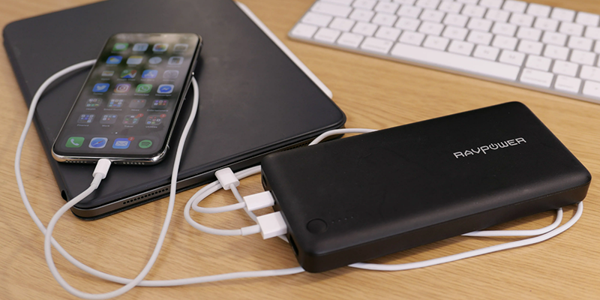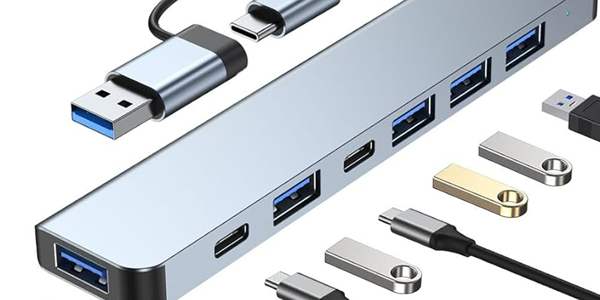How To Choose The Best Portable Charger For Travel
Let's be honest: getting out and about and running out of battery is the worst. I know: I've been there — on a hiking trail with a dead phone, no GPS and no photo to commemorate that day. That prompted me to spend years testing portable chargers, reading reviews and understanding what counts when selecting your ideal travel companion. If you're sick of guessing which charger to take with you, this guide will explain everything you need to know—no jargon, no fluff — just a practical guide to keeping your devices alive wherever you go.

Why You Want A Portable Charger, That'S Made For Travel
Travel throws curveballs. Flights are delayed, maps crash, and photos dry your battery before you can say "selfie." A portable charger is not just a gadget—it's a lifeline. Not all chargers are created equal, however. Some are thick bricks that make your bag heavy, and others don't survive a single charge. The right one? It's small, mighty, and prepared to save the day.
What To Look For In Features (Don’T Miss These!)
Capacity: How Many Times Should You Charge?
Capacity, in this instance, is measured in mAh. It's kind of like the "gas tank" of your charger. A 10,000mAh charger can charge most phones 2-3 times. Weekend warriors might be okay with 5,000mAh. Consume 20,000mAh or more for longer trips or travel in a group. But keep in mind: bigger isn't always better. More capacity usually comes with added weight.
Size And Weight: Will It Fit Your Pocket?
A charger that's overbearing misses the point. Slim, pocket-sized models (like the magnetic ones that adhere to your phone) are ideal for day trips. If you're backpacking, go for lightweight options. Some chargers are so small that they're practically undetectable when you dig in your bag. Some are barn door–sized yet should pack enough punch to resuscitate a tablet.
Charging Speed: Don’t Sit Around Waiting
Seek "fast charging" tech like Power Delivery (PD) or Quick Charge. These features can recharge your phone from zero to 50 per cent in 30 minutes. Steer clear of chargers that take forever—your time is precious if you're racing to catch a train or share sunset pics.
Ports: How Many Things Can You Charge At One Time?
Travel often involves sharing power with friends. Chargers with multiple USB ports (or even wireless pads) can revive your phone, camera, and earbuds simultaneously. A magnetic charger that snaps on like a charm is a lifesaver if you use an iPhone.
Compatibility: Will It Work With Your Devices?
Make sure the charger can support your phone, tablet, or laptop. Some are universal, and others are brand-specific. Apple users: Focus on MagSafe-compatible models. Android fans? Look for USB-C ports.
Portable Charger Types (And Who Each Is For)
The Minimalist: The Slim Chargers For Day Trips
These are feathery light and fit in your pocket. Great for short hikes or city tours where you need one extra charge. For example, a 5,000mAh magnetic power bank that sticks to your phone like a second skin.
Bigger Roads: High-Power Chargers For Long Hauls
The more time you're off-grid, the more you want a 20,000mAh beast. It's bigger, though, and charges a laptop twice or a phone six times. Great for campers or digital nomads
Eco-Warrior: Solar-Powered Chargers
Solar chargers are a specialized choice but lifesavers for remote adventures. Just toss them out in the sunlight for a few hours, and you have backup power. The downside? They're less speedy than standard chargers.
The Klutzy Traveler: Rugged Chargers That Withstand a Drop
These chargers are waterproof, dustproof, and shockproof—they laugh in the face of spills and falls. They're your match if you're clumsy or trekking through rough terrain.
My Favorites (Only Tested And Approved)
Best Overall: A Tidy Powerhouse
I use the Anker MagGo Power Bank (10K). It's small but mighty, fast charging and clings to my phone like magic. Plus, it's airplane-friendly.
Best For Groups: Multiport Beast
The Clutch Charger Pro features three USB ports and a wireless pad. I've recharged my phone, AirPods and my friend's camera simultaneously — no arguments required.

Amazon Best Sellers: Note: Soundcore Life Q30
Ugreen’s 5000mAh Magnetic Power Bank is under 20 bucks and works like a charm. It’s my backup for quick errands or hanging out in coffee shops.
Best For Laptops: The Heavyweight Champ
Satechi Quatro Wireless: I wear this if I think it'll be a long wait or if I need to charge my MacBook Pro and phone on cross-country flights. It's big but a small price for peace of mind.
5 Tips For Using Your Charger Like A Pro
Pre-Charge Before You Go
Always charge your charger at home. You don't want a dead battery at either end of the thread.
Pack The Right Cables
A charger is useless without cables. Carry a small USB-C or Lightning cable in your bag and check it whenever possible.
Avoid Extreme Temperatures
And leaving your charger in a hot vehicle or a freezing cabin can harm it(s). Store it in a cool, dry place, like a piece of chocolate you love.
Check Airline Rules
Most chargers under 100Wh (under ~27,000mAh) are allowed by airlines. Double-check before you fly.
Clean The Ports
Dust and lint can hinder the charging process. Keep them clean with a toothpick or compressed air.
Avoid Stress When Charging On The Go — Final Tips
It's not rocket science to choose a portable charger. These chargers focus on capacity with lots of speed and portability, so you'll never have to worry about being stuck with a dead device. Whether you're an occasional traveller or a world-roaming nomad, there's a charger that will fit your vibe.